Russian soldier cap gun sample 1848 year
The Russian soldier's cap gun model 1848 of the year has a total length of 40,4 cm (15 inches 9 lines), barrel length 24,4 cm (9 inches 6 lines), caliber barrel 18 mm (7,1 lines). The barrel bore is smooth, the weight of the 1390 gun is grams (3 pounds of 38 spools).
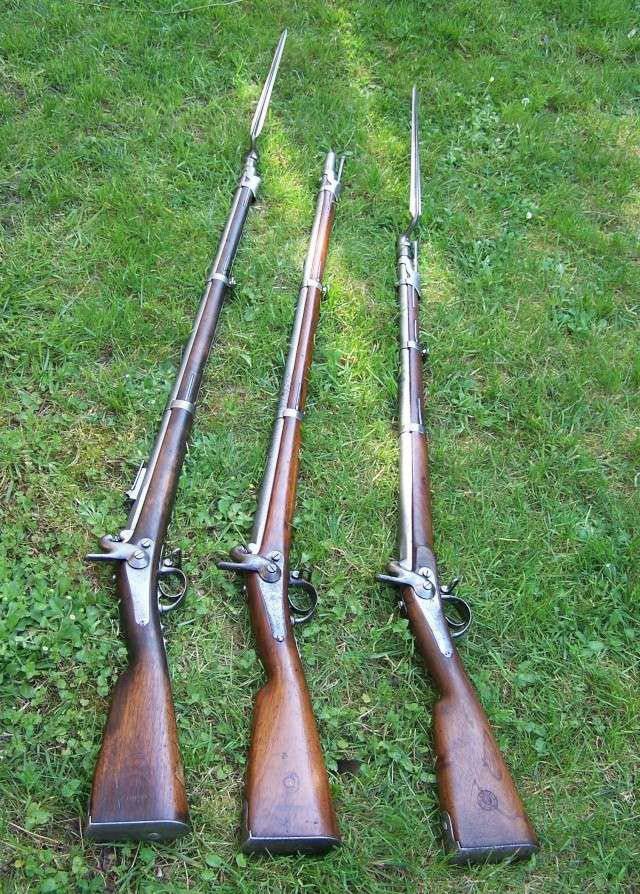
The new lock applied on the pistol was a direct copy of the lock of the French capsule musket of the 1840 model of the year.
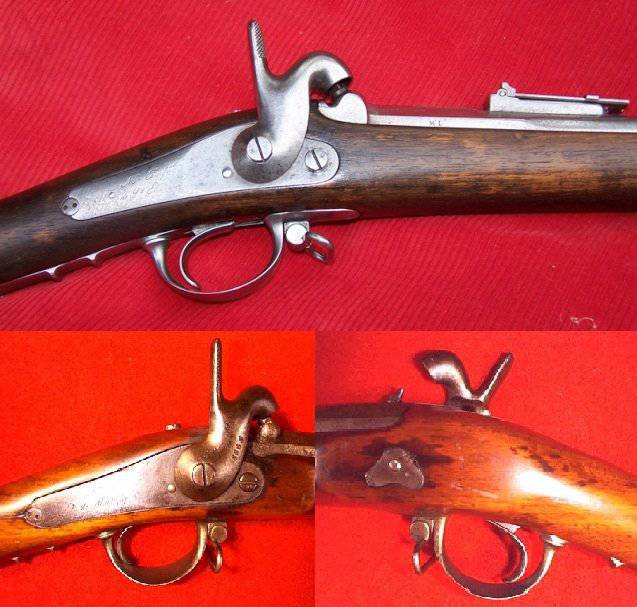
The only difference was the use of brass fittings on the Russian model of the pistol and iron in the French weapons.
The Russian soldier's cap gun of the 1848 model of the year consists of a lodge, a barrel, a cap lock, a trigger with a trigger mask, a trigger guard.
The capsule lock is fastened in the box with a screw, screwed into the threaded hole of a triangular locking mask. Mount the trunk in front of the box by using a brass ring - muzzle. The trigger guard and the shank handle are also made of brass.
The sights of the Russian soldier's cap pistol of the 1848 model of the year are a front sight mounted at the muzzle, and a slotted rear sight, located at the top of the breech.
The barrel of the gun has a slightly conical shape, in the breech (about a quarter of the barrel length) of irregular octagonal shape, in the rest of the barrel of circular cross section. In the breech on the top right, the tide is made with a threaded hole for installing the brand tube. The breech bolt has an elongated shank, with a hole for the fastening screw.
The box of the capsule gun of the 1848 model of the year presented in the photo is most likely not original, but a new model one, but it allows illustrating the configuration of the handle and forearm of the gun. The bed has cutouts to accommodate the barrel of the pistol, the lock, the locking and triggering faces, the shank of the breech bolt, the butt plate of the handle, the locking ring of the barrel. In accordance with the construction tables for the pistol, the bed should be made of birch wood and painted with black paint.
The fixing barrel ring, which is also the tip of the forearm, is made of brass. The ring is held by a spring-loaded plate fixed in the lower part of the forearm.
The capsule lock of the 1848 model pistol of the year consists of a keypad, a combat spring, a trigger, an axle of a trigger with a leash, a trigger lever and a bridle. The spring is "V" shaped, its long shoulder is placed in the upper part of the keypad and through the leash acts on the axis of the trigger. The axis of the trigger is fixed in the firing position of the trigger arm. When pressing the trigger lever, the sear releases the trigger axis, which, due to the spring, strikes the primer located on the brand tube. The primer will ignite the powder charge in the barrel - a shot occurs.
The trigger has a somewhat in-depth shock part to prevent fragments of the capsule from flying and to protect the shooter’s eyes. Knitting needle straight with diamond-shaped notch from the front. The impact part of the trigger is shifted to the left relative to the plane of the keypad.
The Russian soldier's cap gun of the 1848 model of the year produced the Tula and Izhevsk weapons factories. Weapons produced in various factories had their own distinctive features, primarily related to marking features.
The markings on the locks of capsule pistols of the 1848 model of the year, produced at the Tula Arms Plant, were a letter text: “TOZ” under which the year of the “1852” release was recorded. Between the inscriptions there was a broken line with a dot.
The lock mask could be an irregular oval shape. The year of issue “185 ...”, the serial number “166” and the receiving stamp in the form of an image of a hammer, as well as the letter “C”, were put on the image.
Marking on the shank of the handle also represents a serial number, year of production, stamp of acceptance in the form of a hammer and the letter "UM".
Marking of a similar nature is applied on the left side of the fixing receiver ring (muzzle). Unfortunately, no information was found on what the alphabetic characters in the marking indicate, perhaps this is the personal stamp of the master who took the weapon.
The number of the pistol was also applied on the trunk on the left side on one of the faces of the breech.
Marks with the year of manufacture, number and stamps of acceptance were applied on the front of the trigger guard.
Visually comparing the Russian soldier's capsule cap model 1848, released at the Tula Arms Factory and Izhevsk Arms Factory, it is almost impossible to notice the differences. A slight difference is observed only in the form of the lateral bends of the shank of the handle.
Considering the features of another gun model 1848 of the year, made in Tula, we can note the presence of more accurate letters "A" in the left and middle parts of the keypad, as well as poorly viewed stamp in the right part of the keypad just to the left and below the right fixing screw. There is a greater bending of the trigger mask in the place of attachment of the rear pillar of the trigger guard, although this impression may be deceptive due to the different resolution of the photos.
On the barrel of the gun in addition to the number "№2381" marked "OZ".
The appearance, shape and marking of the lock mask is almost the same as that of the previously described gun.
Similar markings on the front of the trigger guard.
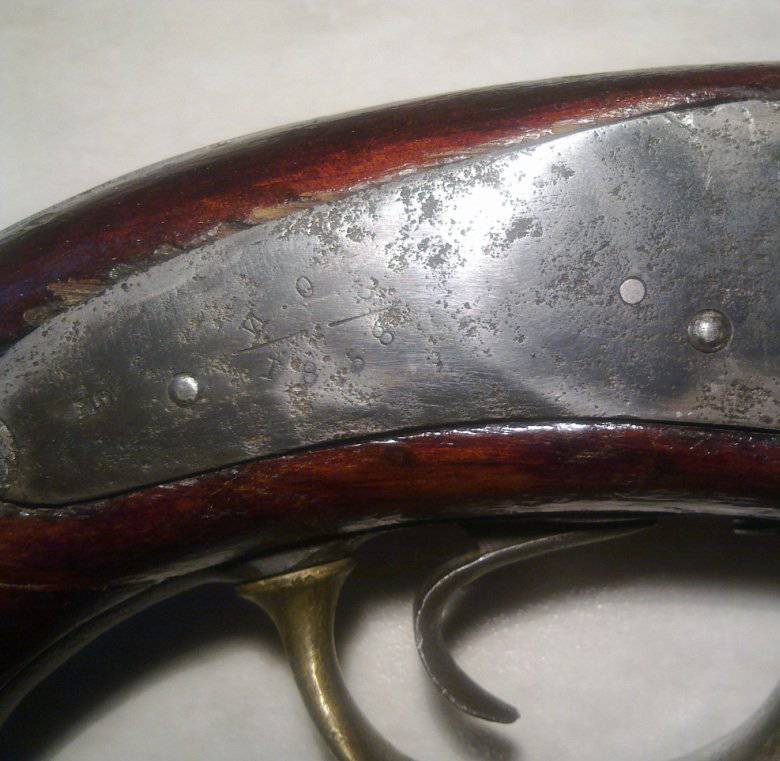
The marking of the keypad of the percussion pistol of the 1848 model of the year released at the Izhevsk Arms Factory represents the year of “1858” printed under the letters “IOZ”. Between the inscriptions there is a dashed line with a dot.
The letter “D” and the stamp of the Izhevsk Arms Plant are inscribed on the lock.
The marking of the trigger guard of a pistol produced at the Izhevsk plant represents the year of “1851” of release and the letter “B”.
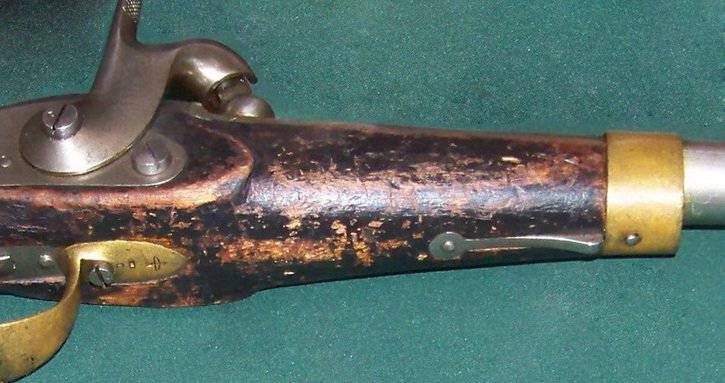
Sometimes an image of a bow and an arrow, i.e. stamps of Izhevsk plant.
The Russian soldier’s percussion pistol of the 1848 model of the year released in Izhevsk has different markings on the barrel. In addition to the number on the left side of the breech, in the upper part of the barrel there is a stamp of the Izhevsk plant in the form of a bow and arrow. Under it is applied the year of issue «1851».
On the shank of the breech bolt there is a stamp in the form of a bow and arrow, the year of issue “1851” and the letter “B”.
You can also see a stamp in the form of a bow with an arrow and the letters “HD”
Similar markings are made on the left side of the muzzle.
On the left side of the barrel ring of the Izhevsk pistol, marking was sometimes applied only in the form of the letter “B”.
Russian soldier cap gun sample 1848, one of the few samples of Russian short-barreled firearms, drawings of which have survived to the present day. The tables of the soldier’s percussion pistol of the highest specimen approved in 1848 year and the drawings of the soldier’s capsulary pistol of the 1848 sample of the year belonging to them can be obtained on the Drawings page of the capsular soldier’s pistol of the 1848 model
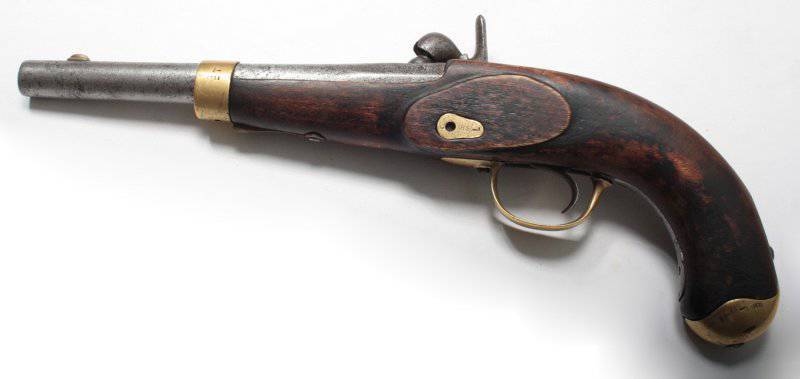
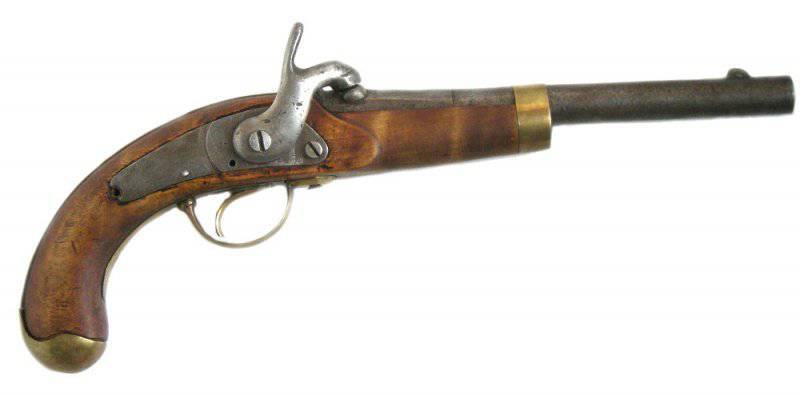
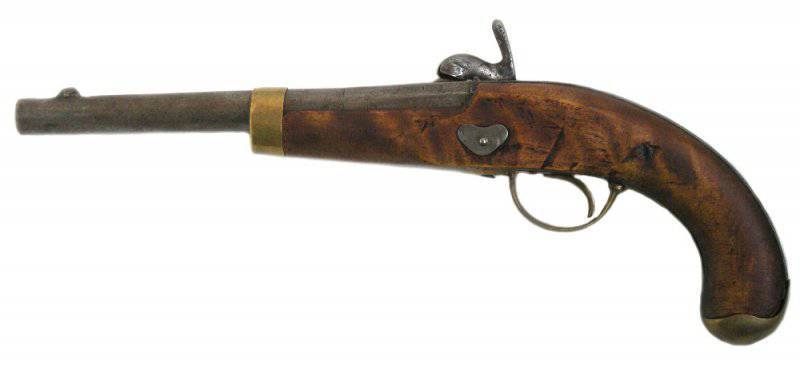

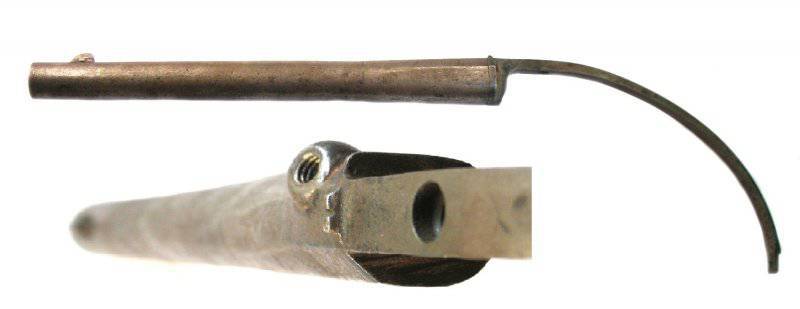
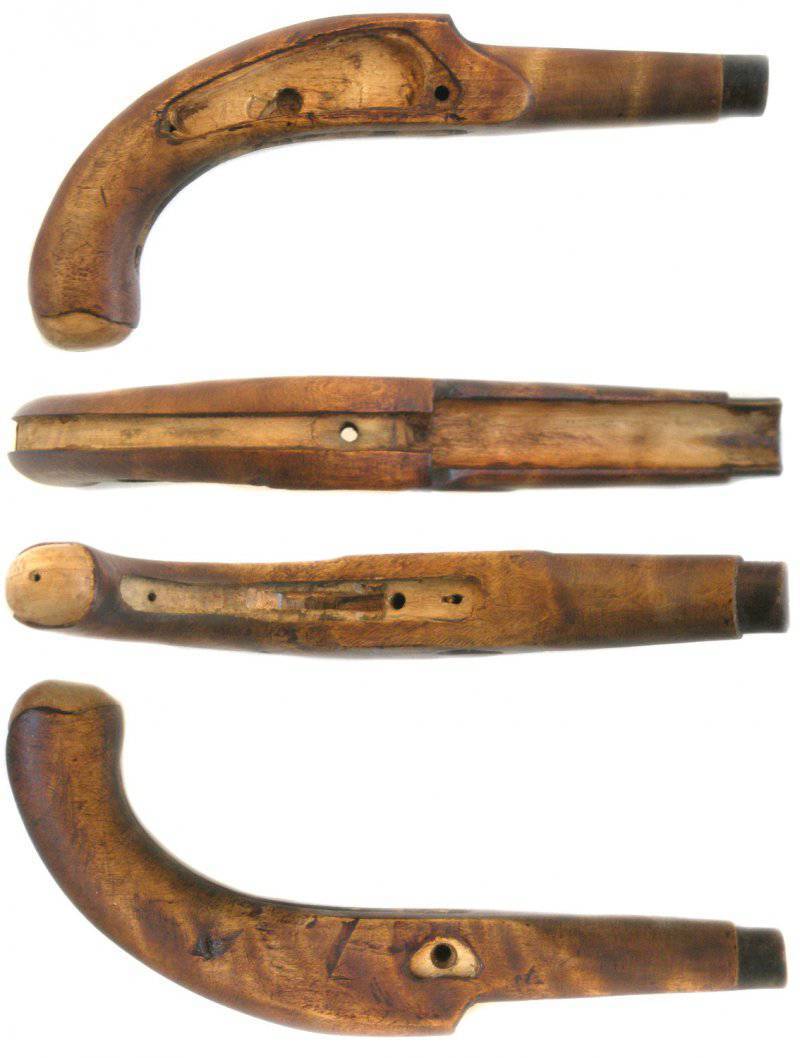
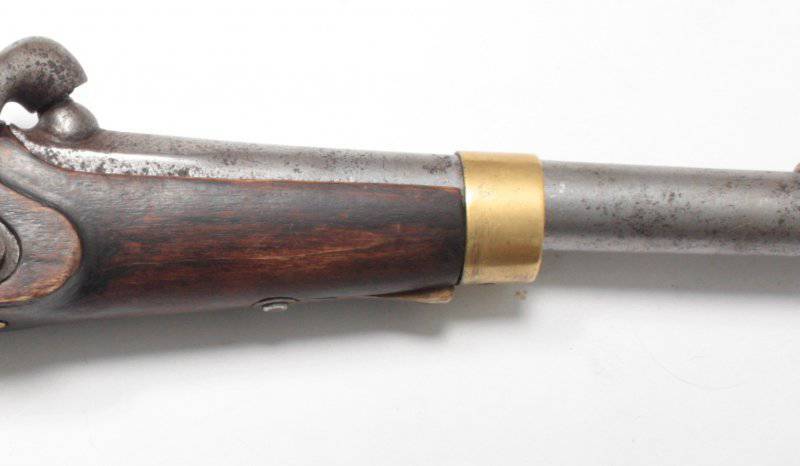
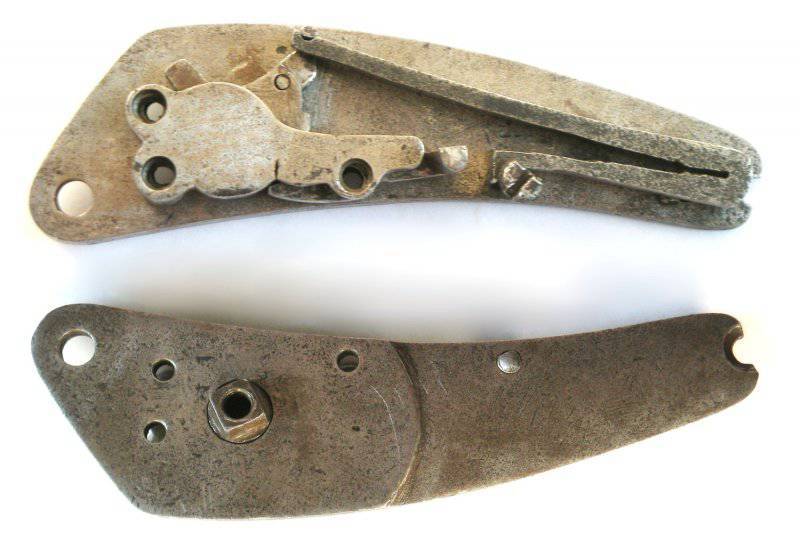
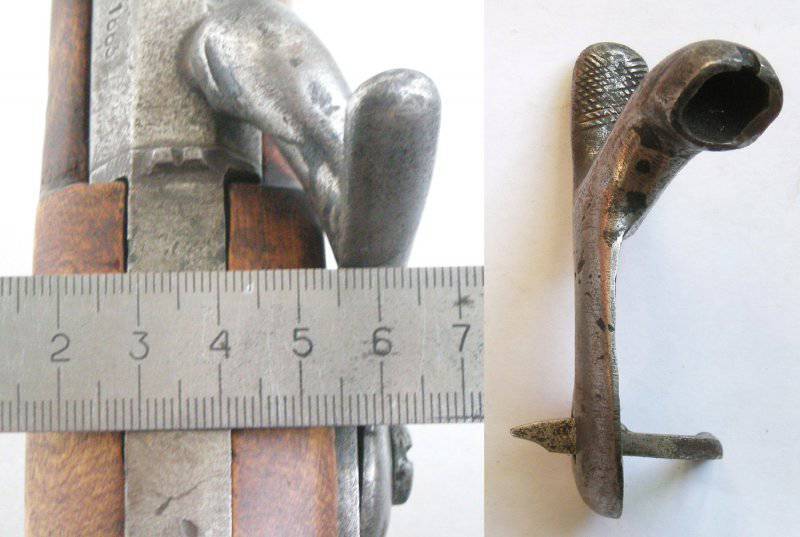
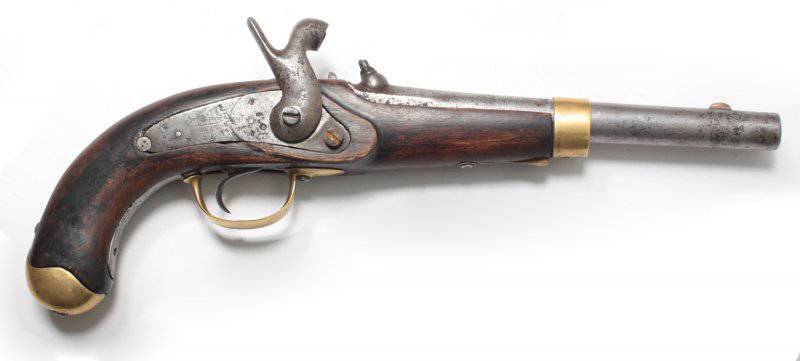
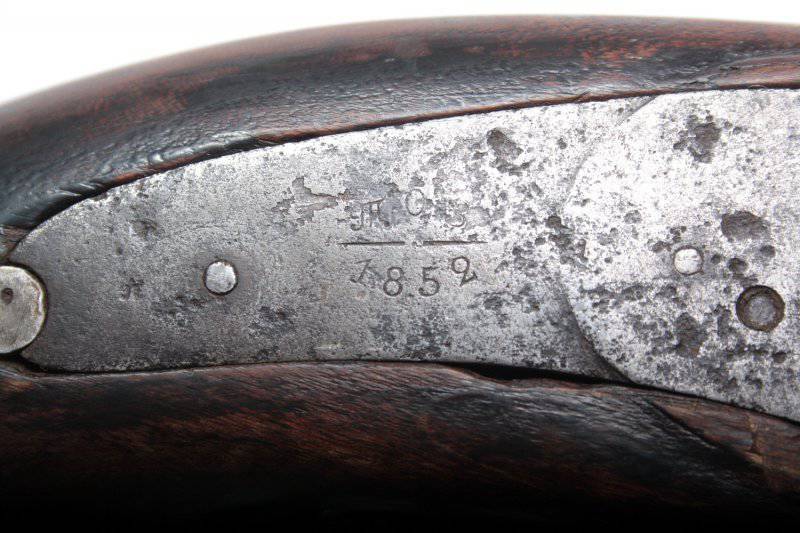
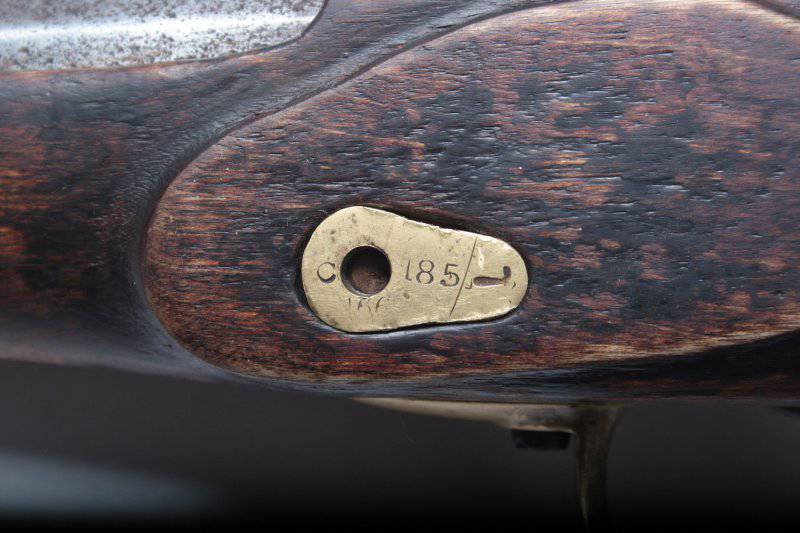
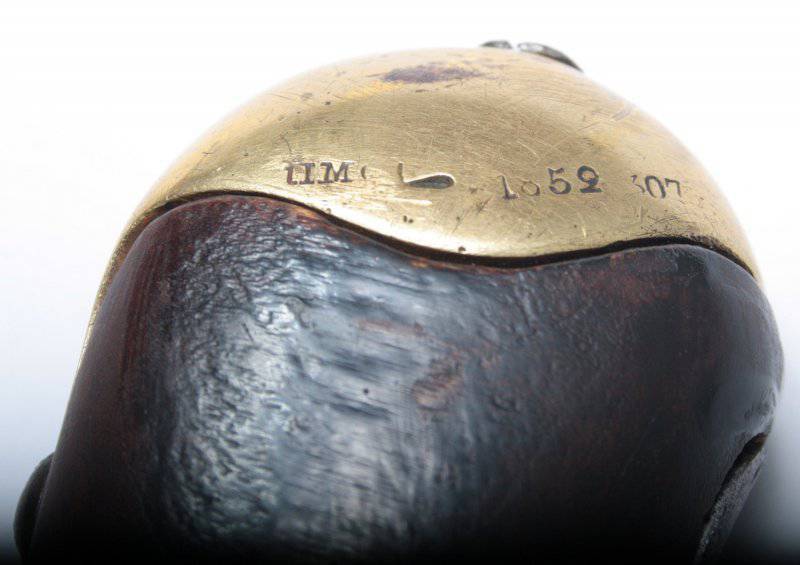
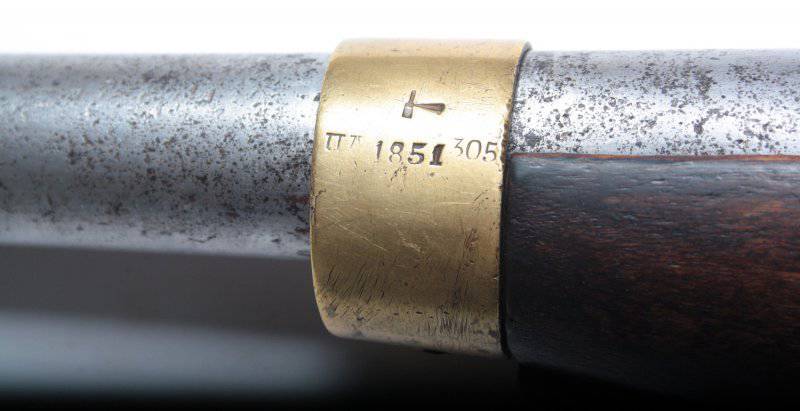
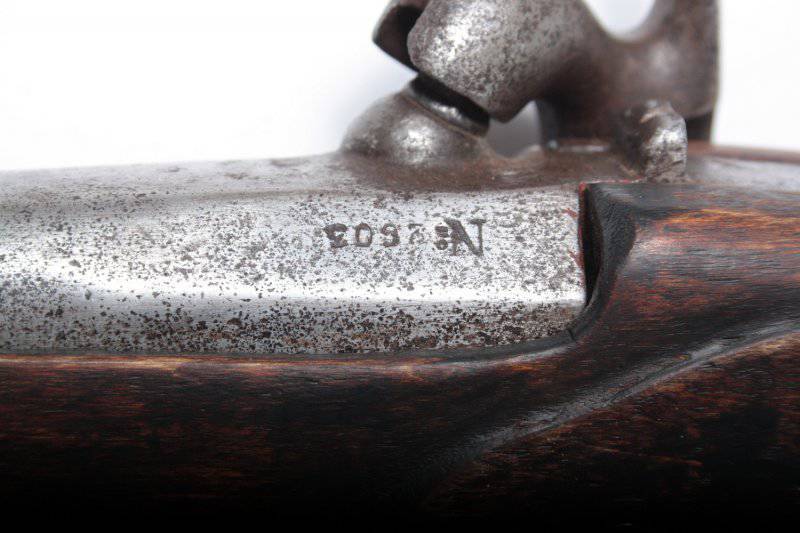
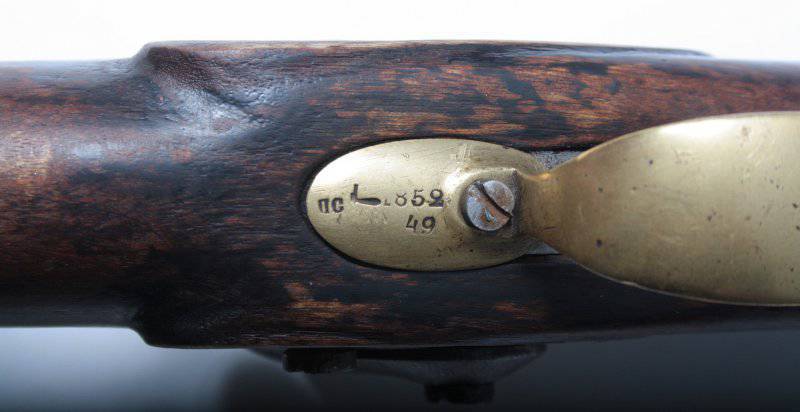
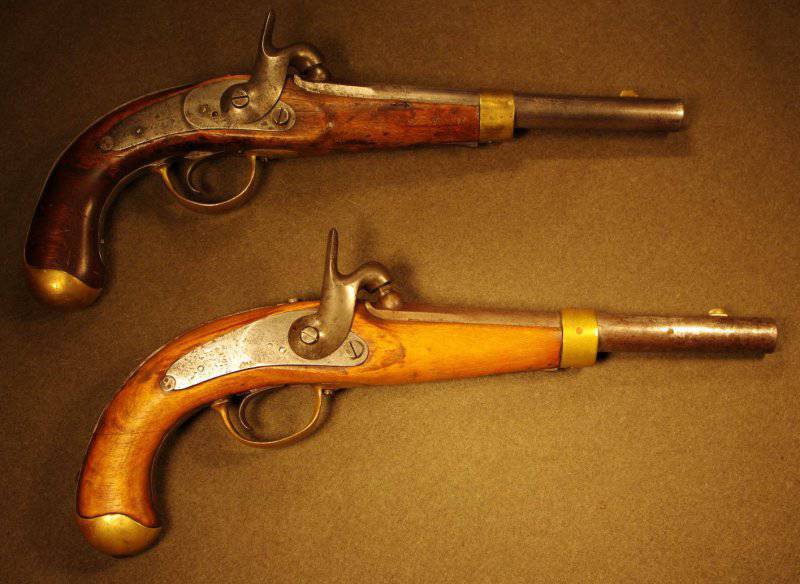
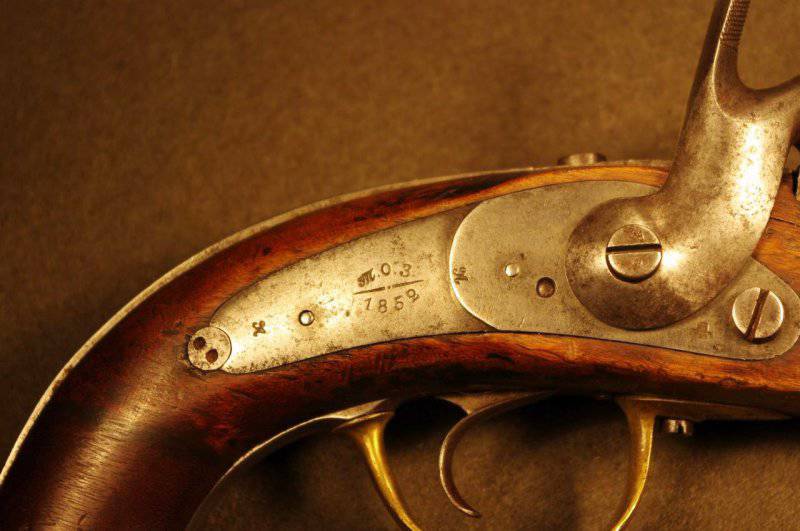
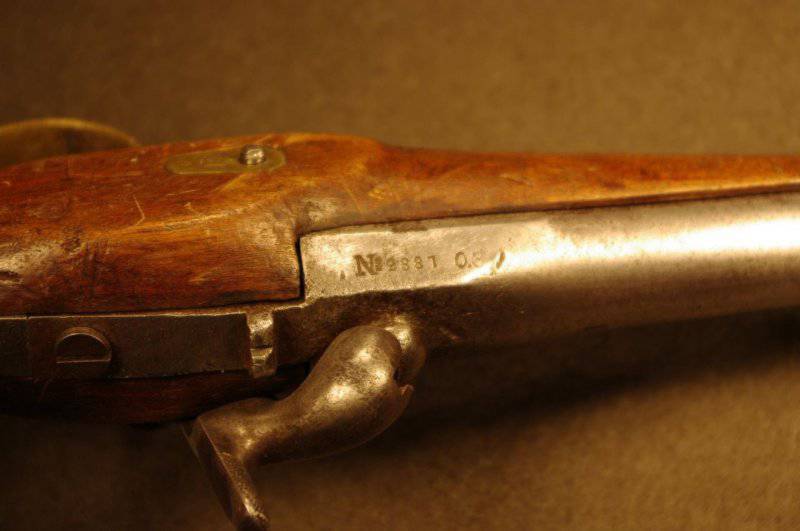
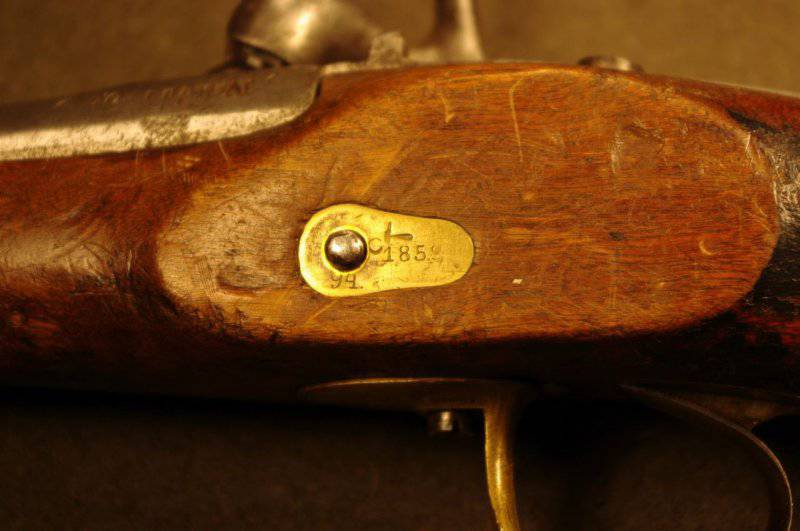
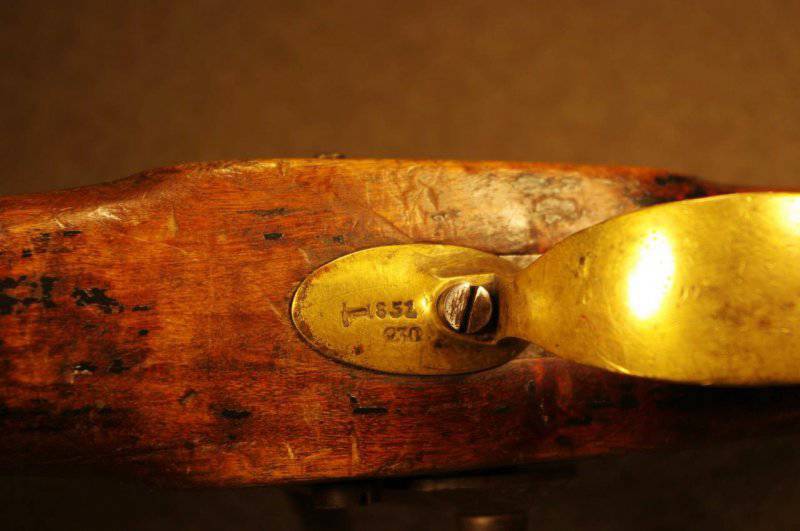
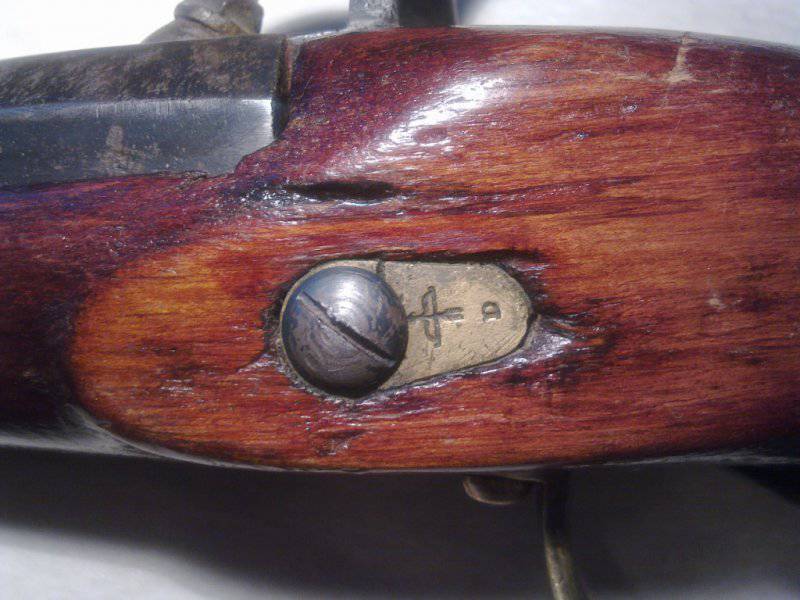
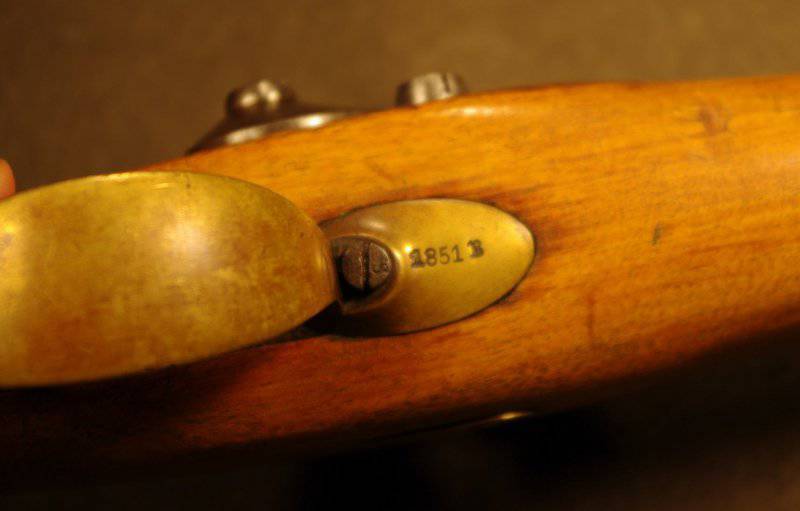
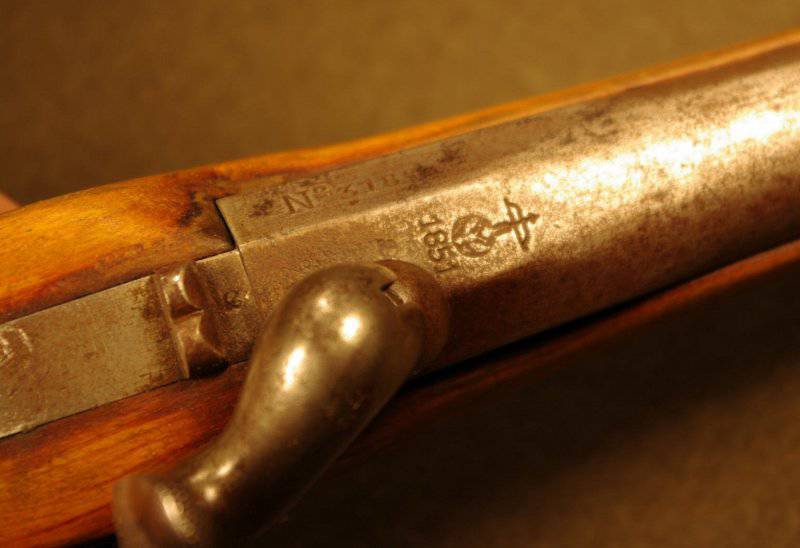
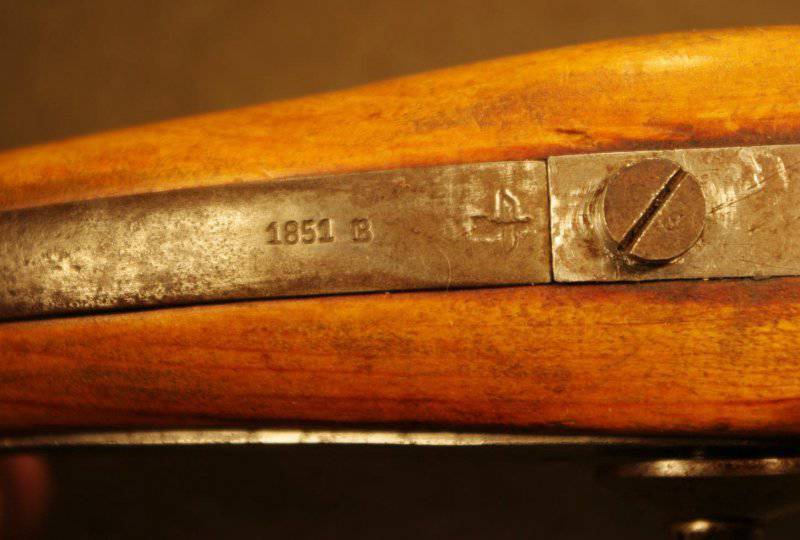
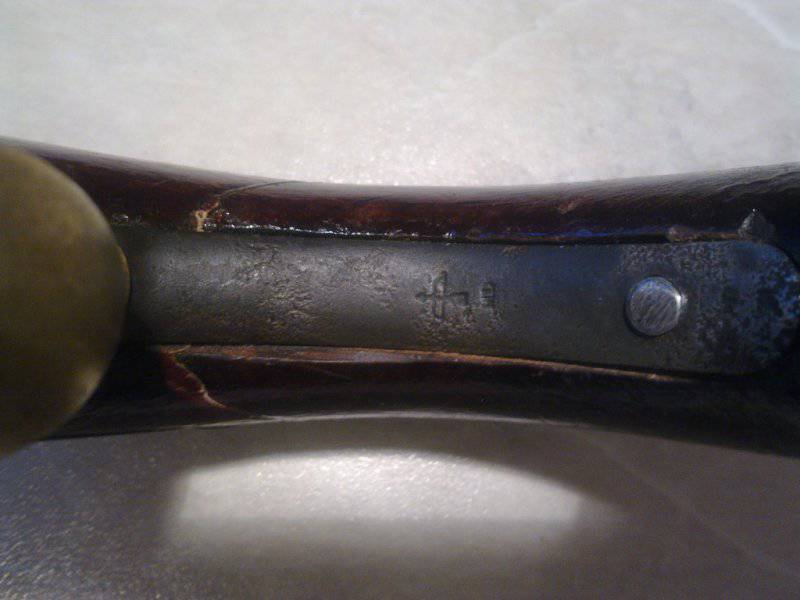
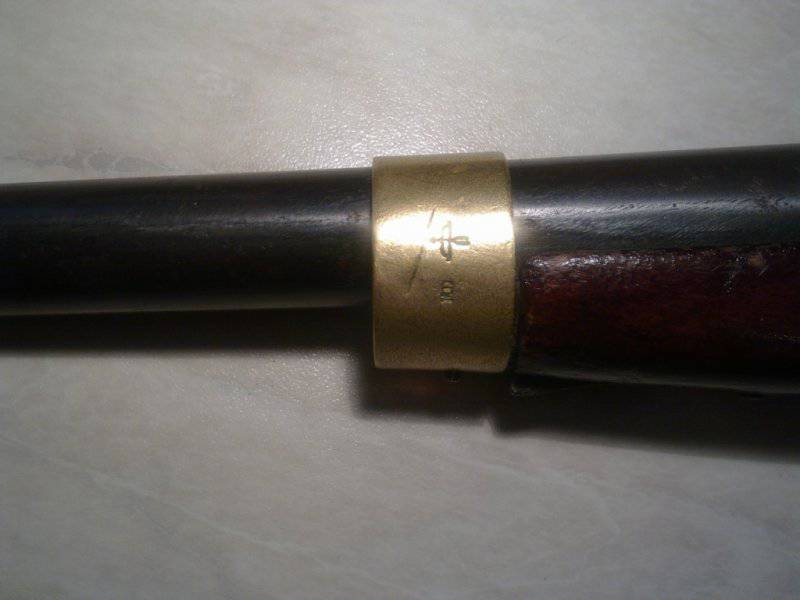
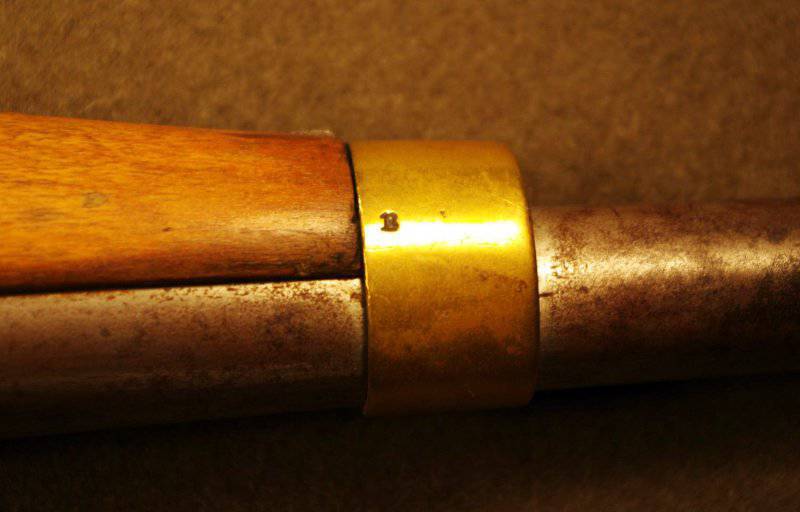
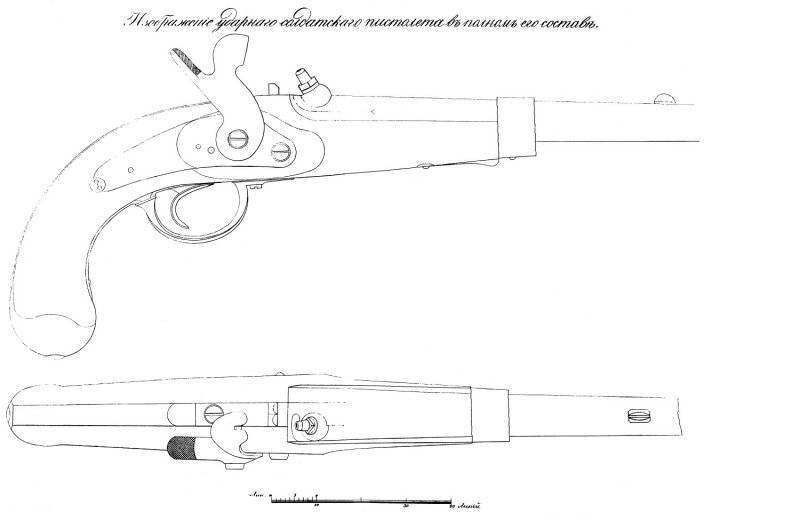
Information